How to choose a sitting bath
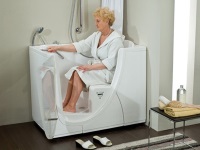
Sitting bath - this is one of the most common types of small-sized baths, which can rightly be considered a "magic wand" for bathrooms with a small area. And if in ancient times wooden barrels were used as containers for bathing, now people use metal or acrylic bathroom attributes.

Pros and cons
The main advantage of the sitting bath is its compactness - it is easily placed even in the smallest bathrooms.
Among its other advantages, it is advisable to highlight the following:
- it is ideal for people with disabilities and the elderly - if it is equipped with special handrails, it will be very easy for a person with health problems to enter it;
- it is very comfortable for pregnant women, because they are known to find it difficult to bend down and lift their legs high and to avoid straining their abdominal muscles;
- it is a godsend for those who cannot take a bath lying down (for example, people with a weak heart).
However, this piece of sanitary ware also has a significant disadvantage - it is small size for a normal person - not everyone will be comfortable to sit in the tub.
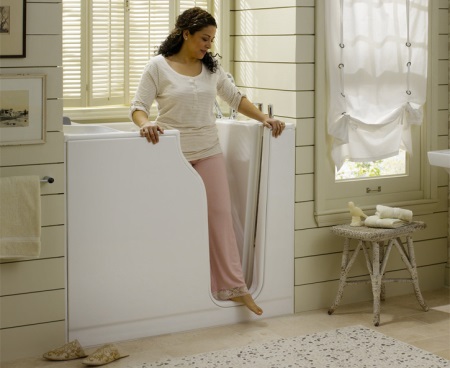
Sizes
Seated baths are classified according to a variety of parameters - shape and size, material and functionality.
Standard sizes of sitting bathtubs:
- small (usually 100x70 cm);
- standard size bathtubs (120x70 and 150x70 cm);
- the most comfortable (120x110 cm).
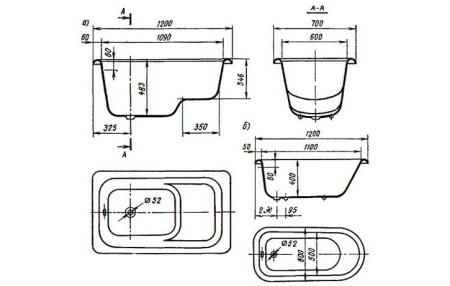
Shapes
Seated bathtub shapes:
- rectangular;
- square
- oval;
- angular.
Additional features
Of the additional features we can note the presence of a side door, which serves for comfortable entry into the bath. In addition, many products are equipped with hydro-massage devices for recreational water procedures.
By making the walls or hanging a special curtain, you can equip a shower.
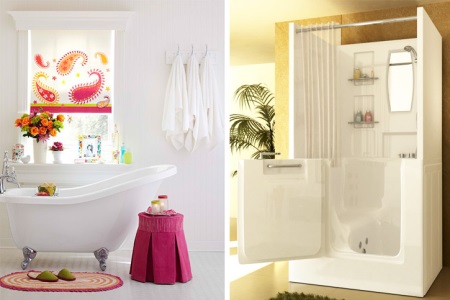
What bath to choose
According to the material of which they are made, sitting baths are divided into:
- steel;
- acrylic;
- cast-iron.

Steel
The main advantage of steel sitting bath is considered its availability - it costs very little, especially in rectangular form. It should also be noted its low weight and high hygiene.
It has much more disadvantages:
- steel baths do not retain heat well, so it is desirable to insulate them with installation foam;
- it is not durable - one small scratch can cause corrosion that will be unstoppable;
- it can cause discomfort with the loud noise of filling it with water;
- steel tubs must be grounded when installed
- do not use scouring powders to clean these bathtubs - they damage the enamel.
Acrylic
Currently, the best of all kinds of sitting baths are acrylic.
Since acrylic is quite plastic material, the bathtubs made of it differ in the widest variety of forms. Also, acrylic perfectly retains heat, does not make noise when you draw water, and can be easily repaired in case of various damages (even through holes). Acrylic bathtubs are very easy to handle - you can easily cut into them absolutely any equipment.
The disadvantages In the case of such products can be attributed only to the price (compared to other types of baths, they are the most expensive), as well as the fact that their installation requires a rigid metal frame.
In addition, you should know that imported acrylic plumbing is not always withstand chemical composition of our water, so it is advisable to choose baths of domestic production, which are adapted for much harsher conditions.
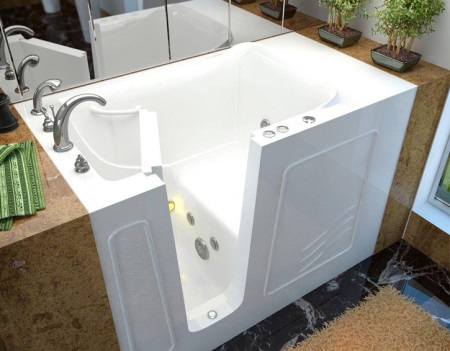
Cast-iron
Sitting baths made of cast iron are considered by many to be a relic of the past, and in stores they are found much less frequently. However, these models are still successfully used in some "Khrushchev", and there are good reasons for that.
The preference for such baths is mainly due to their ability to retain heat well. They cost much less than showers. They are durable, strong and resistant to mechanical stress. In addition, some modern models of cast iron bathtubs are equipped with a door, which will certainly be appreciated by people who need help to take a bath.
However, cast iron products have disadvantages - they are characterized by high weight, which cannot but affect their installation, and the lack of variety of forms (usually it's just a straight bath). Of course, it is possible to produce a bathtub of a complex configuration of cast iron, but the price of such a piece of sanitary ware will be much higher.
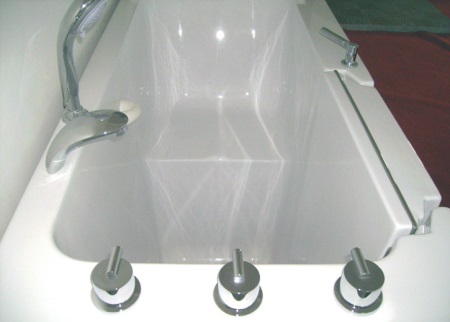
Learn more about which bath to choose: acrylic, steel or cast iron Read in another article.
The benefits of
Sitting baths are characterized by a very wide range of effects, which includes the prevention and treatment of existing diseases. They can take them people regardless of their age. Pour the water to such a level that the water was under the lower abdomen and upper thighs.
Remember that the total time of such a procedure should not be more than half an hour.
The scheme of the sitting bath is shown in the following figure.
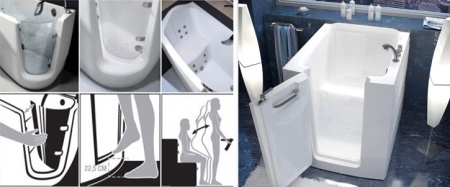
To enhance the therapeutic effect of bathing, you can add floral and herbal infusions and decoctions or aroma oils to the water.
However, even if you decide to try the most seemingly well-known folk remedy, consult your doctor! Each person's body is different, so it is better not to take risks - what is good for one, can go to the detriment of another.
The use of aromatic oils must also be careful and thoughtful - as well as the use of medicines. For one bath you usually need 5-10 drops of oil (no more because of its high concentration). For aroma oil to mix more easily with water, it should be added to salt (table salt or sea salt), bath foam or dissolved in a little milk.
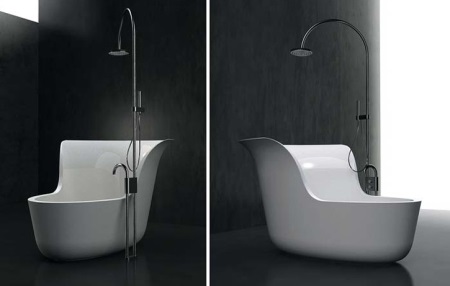
Essential oils should be chosen on the basis of the purpose. If you are constantly stressed and do not sleep well, lavender and chamomile oils will help you. Rosemary oil is good for relieving pain in your hands and feet. If you want to lose weight, use lemon, juniper and black pepper oils. To fight cellulite, bergamot, orange and grapefruit oils are good.
We wish you pleasant and useful water procedures!





Mom is having a hard time taking a recumbent bath. We should get her a sitting one, where she will be much safer and more comfortable.